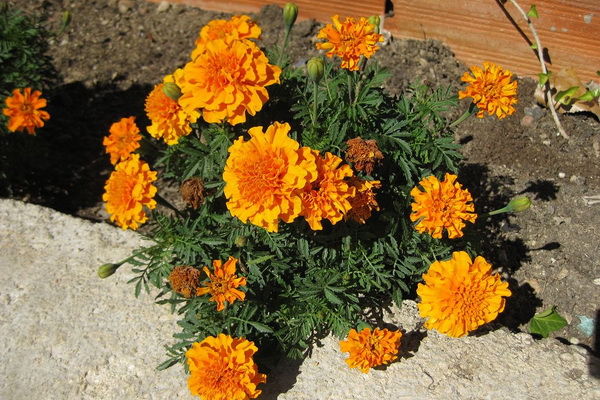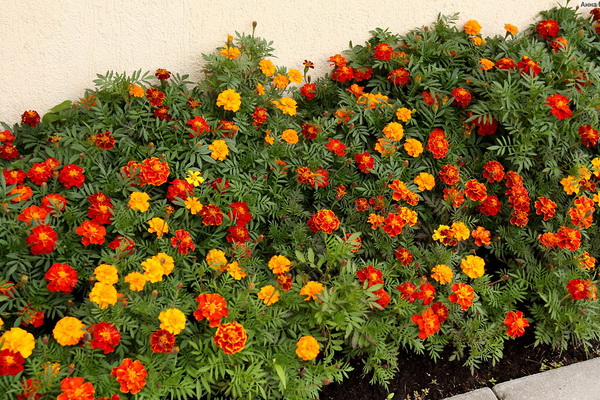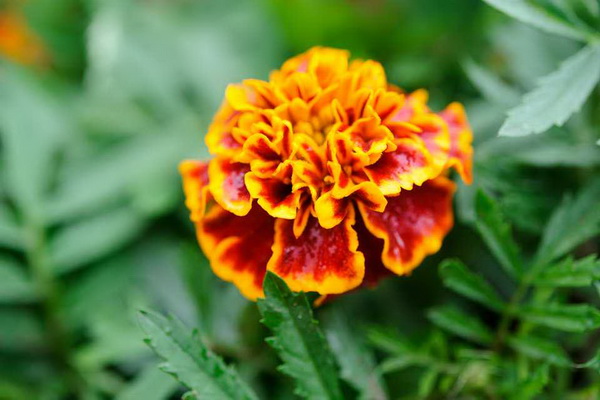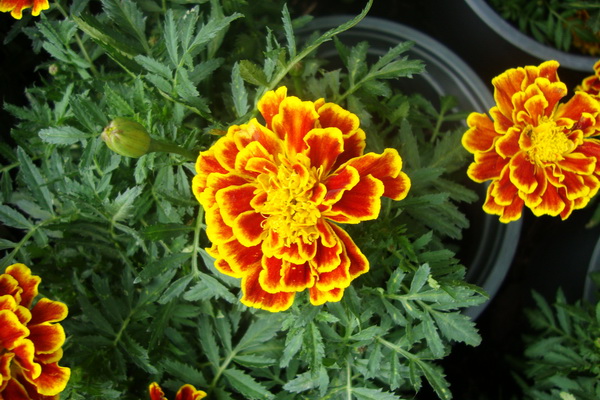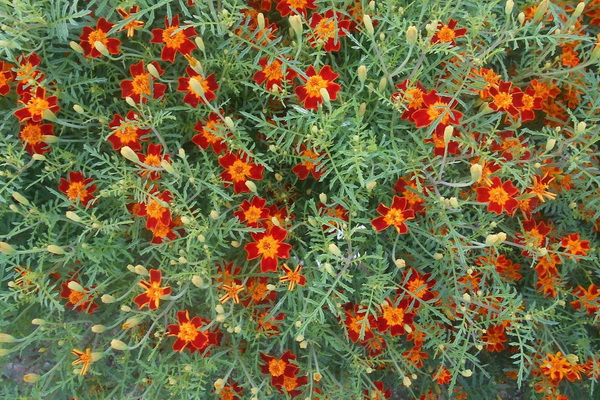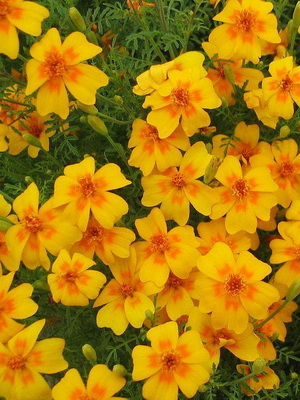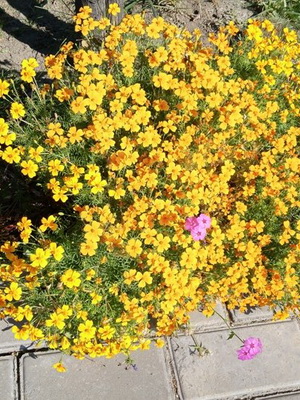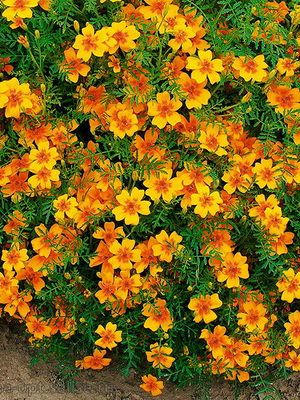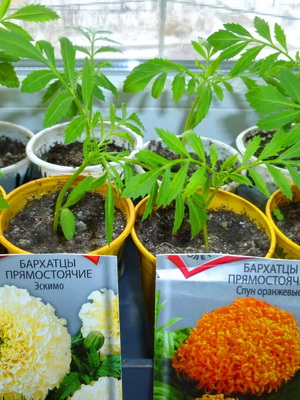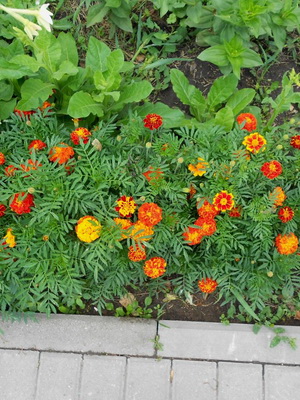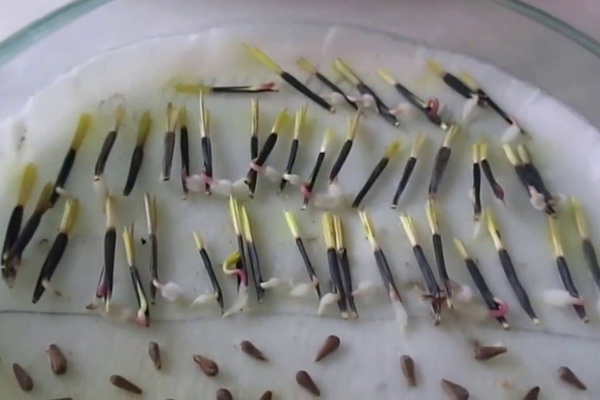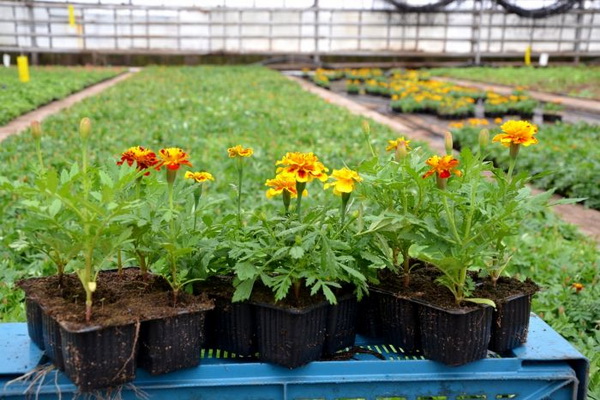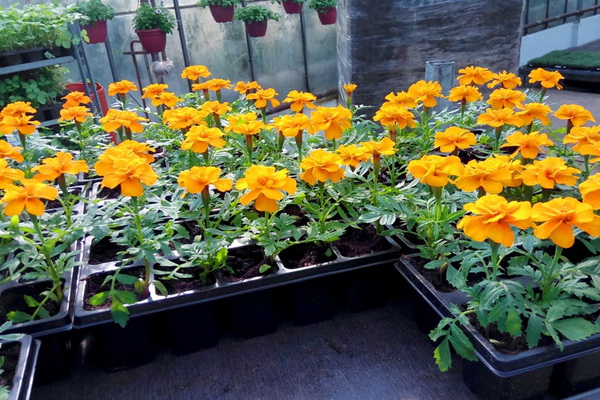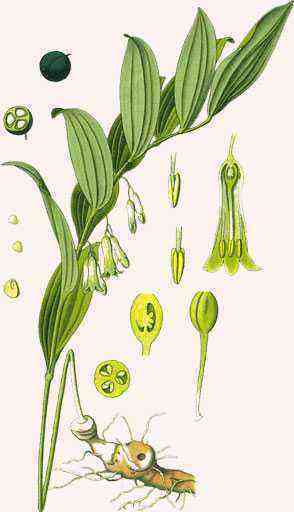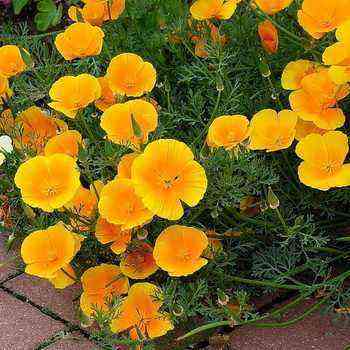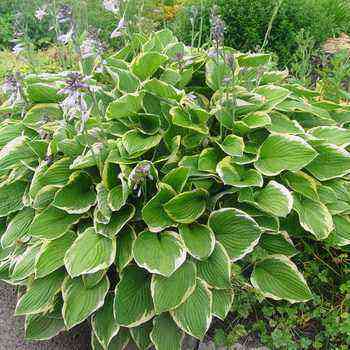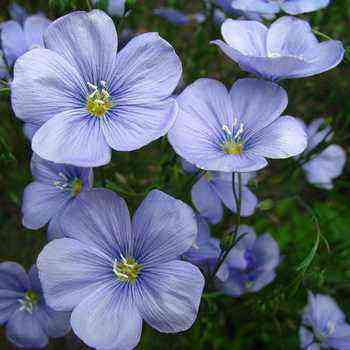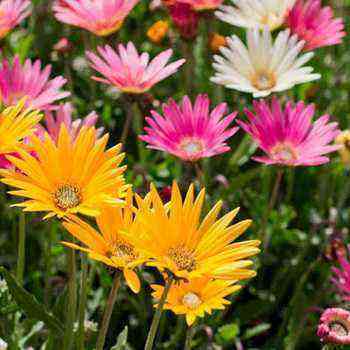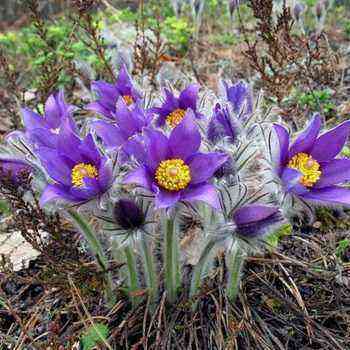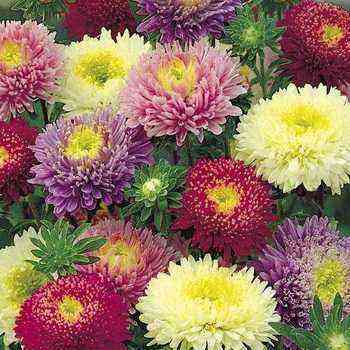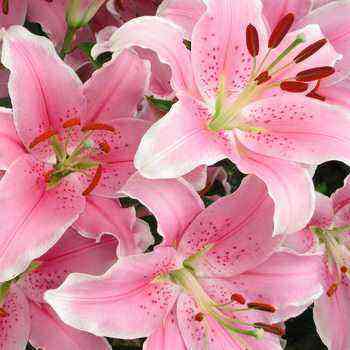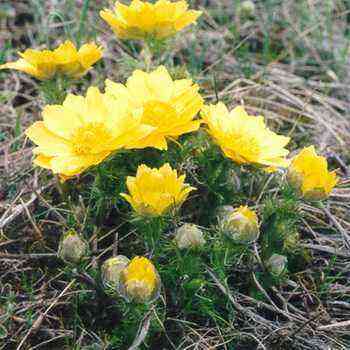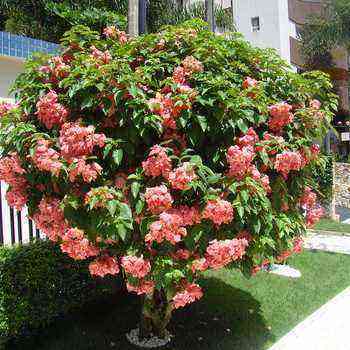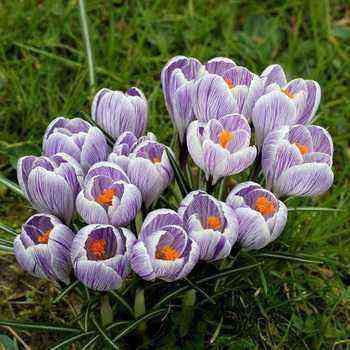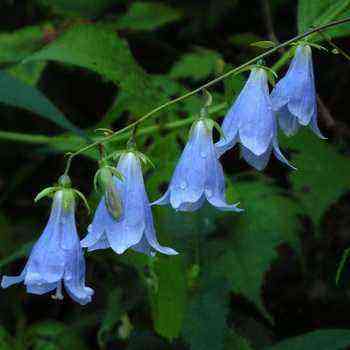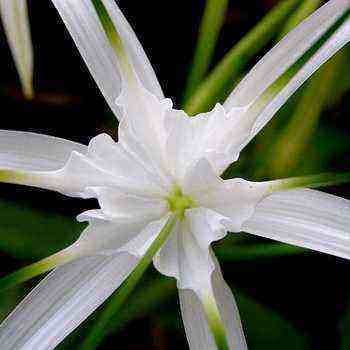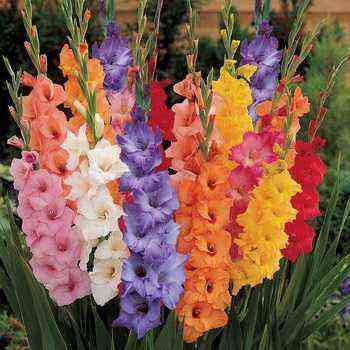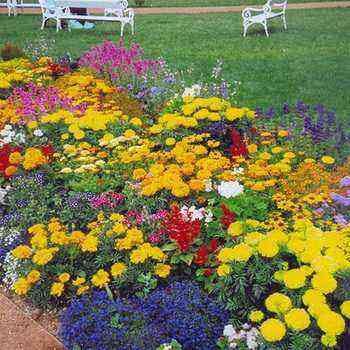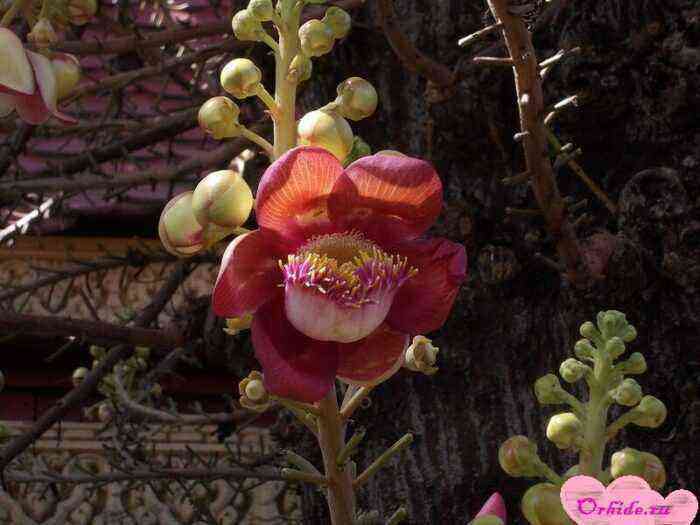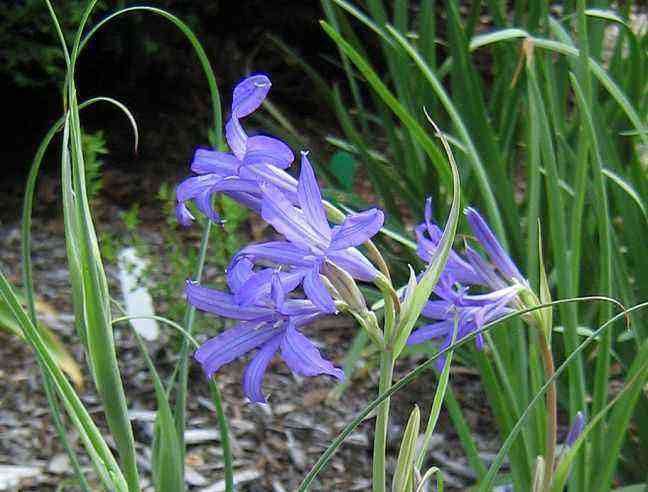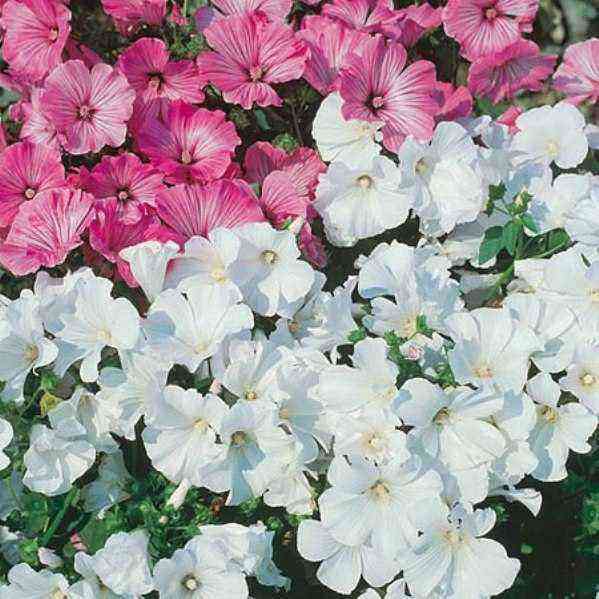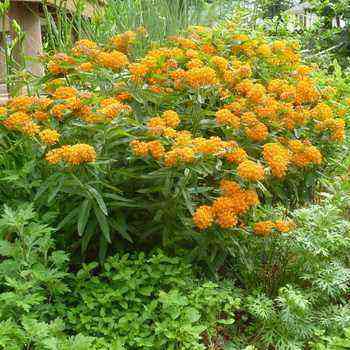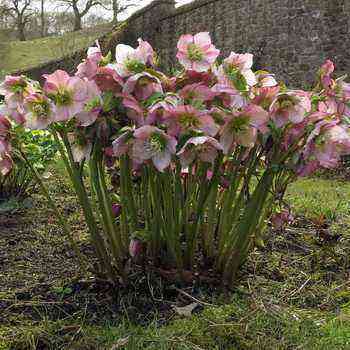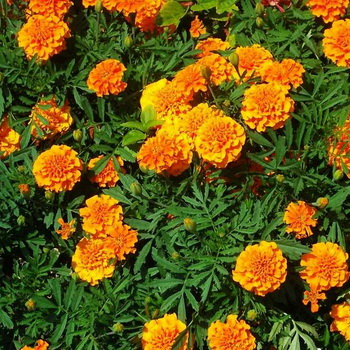
The first scientist to describe these flowers was Karl Linnaeus, who in the middle of the 18th century systematized these plants and named them after the Etruscan deity Tages, who, according to legend, was born from a freshly plowed furrow.
In this material, you can familiarize yourself with the photos, names and botanical descriptions of the most beautiful species and the best varieties of marigolds, as well as learn how to grow plants from seeds in the open field.
Species and varieties: botanical description of marigolds
Of the 53 species of marigolds, the most popular in decorative floriculture are erect, rejected and thin-leaved.
Erect marigolds (Tagetes erecta) are also called African.
They are annual plants 30-100 cm high with pinnately dissected leaves and straight stems. The inflorescences of Tagetes erecta are most often simple, but there are also varieties with double, large flowers up to 10 cm in diameter.
The natural habitat of this species is the pine forests and oak groves of Mexico, Latin American areas with low humidity. In the southern North American states, uncultivated plants are considered weeds.
The first mentions of erect tagetes were found in the work of the Spanish missionary Bernardino de Sahagun “General history of the affairs of New Spain” in the middle of the 16th century. In this fundamental work, a Spaniard who visited Mexico reported that the locals call these plants Sempoalsucitl.
Tagetes erecta are classified by height:
- Low-growing (30-45 cm high);
- Medium-sized (45-60 cm high);
- Tall (60-90 cm high);
- Giant (above 90).
According to the method of application, erect marigolds are classified into:
- casing (for growing in flower beds, most often these are low and medium-sized varieties);
- cut-off (tall varieties used to make bouquets. In water, they can remain fresh and attractive for up to 3 weeks).
According to the shape of the inflorescences, Tagetes erecta is classified into:
- Cloves (their flowers consist of wide ligulate flowers in several rows; sometimes accrete, resembling tubular flowers are found);
- Chrysanthemum (their flowers are tubular, strongly overgrown, dense or loose, as a rule, they stick out in different directions, like chrysanthemums).
Also, the inflorescences of erect marigolds can be densely double, semi-double and spherical.
Of the undersized varieties, the most popular are Antigua, Eskimo, Lunnaya Pesnya and Yantar.

The “Antigua” variety is one of the most common.
These bushes are as lush as they are low (These figures are approximately 30 by 30 cm). The main advantage of the Antigua variety is its large inflorescences up to 10 cm in diameter. Primary colors: deep yellow, light lemon, bright orange and golden.
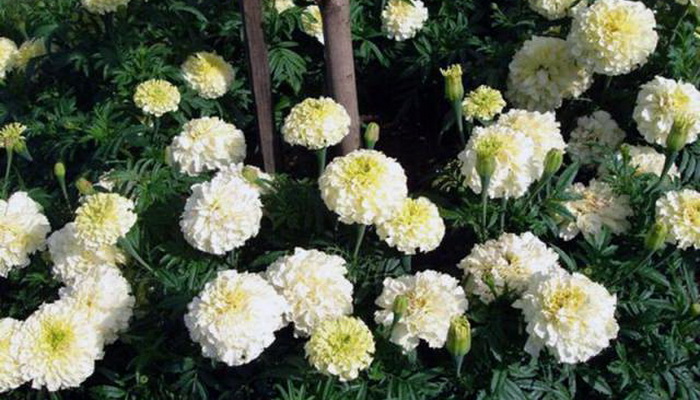
The “Eskimo” variety attracts with its dense doubleness of inflorescences, graceful leaves and white color of petals, which is non-standard for Tagetes. These bushes are usually up to 35 cm tall.
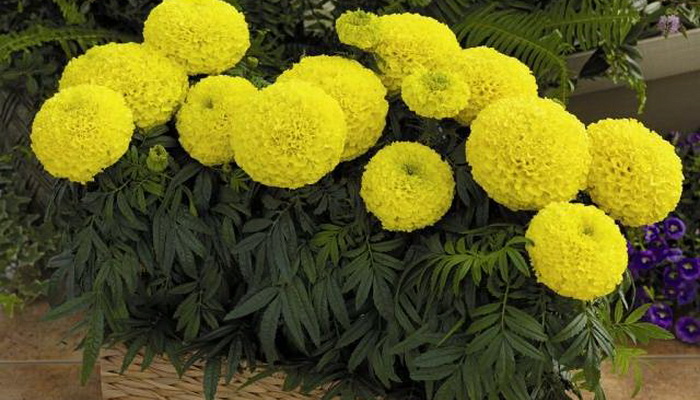
The Moonsong variety was bred by American breeders.
Over the years of crossing, the dense inflorescences of this variety have acquired such a high density that they can repel rain drops. The flowers are bright orange in color, like terry suns. The bushes grow well in diameter and retain their decorative qualities throughout the growing season.

The Yantar variety is one of the first to bloom, already 2.5 months after planting the seeds. The flowers are even in height and habit, and have a rich amber color.
Among the medium-sized erect marigolds, the varieties “Aztec lime green”, “Vanilla”, “Alaska” and “Solar giants” are distinguished.
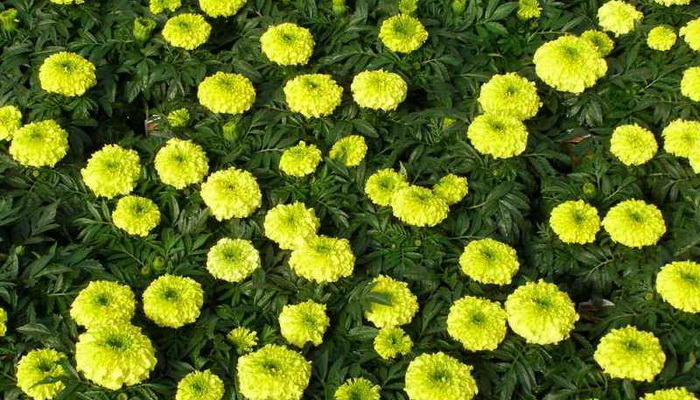
The Aztec Lime Green variety has a unique lime green color. Bushes are compact, of medium height, the inflorescences are large enough – up to 12 cm in diameter.
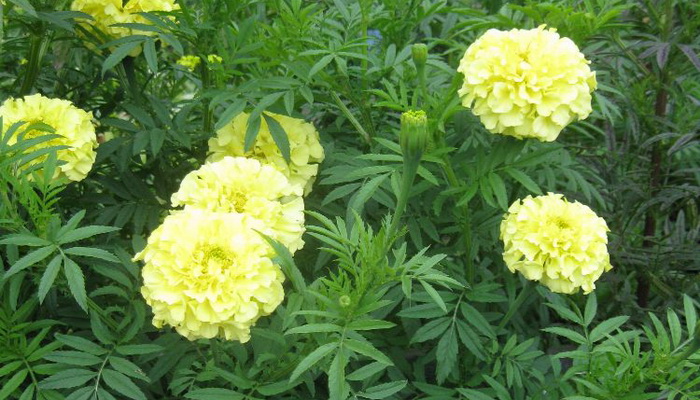
Variety “Vanilla” has medium-sized (up to 8 cm) flowers, bushes grow up to 50 cm in height. The main difference between this variety is the creamy or vanilla color of the petals with a yellow center.
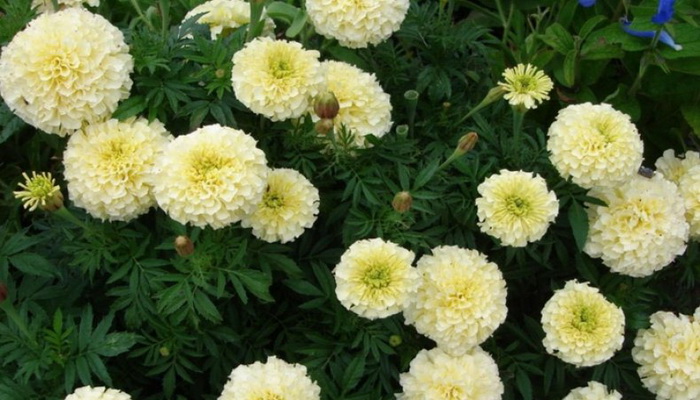
Variety “Alaska” in terms of height and size of inflorescences is the same as “Vanilla”, but the color of its flowers is light cream.

The “Solar Giants” variety is characterized by the enormous size of the inflorescences (up to 15 cm or more) and this with an average height of the bushes (up to 50 cm). The standard color of the flowers is intense lemon and bright orange.
In the group of tall, erect marigolds, the varieties “Kilimanjaro”, “Yellow Stone”, “Golden Light”, “Lemon Prince”, “Orange Princess” and “Fantasy” deserve special attention.
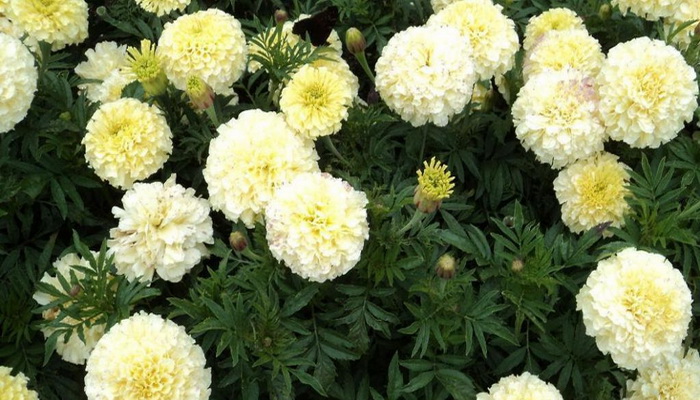
The variety “Kilimanjaro” with its white inflorescences resembles the variety “Eskimo”, but much higher (up to 70 cm), due to which it looks like a powerful giant.
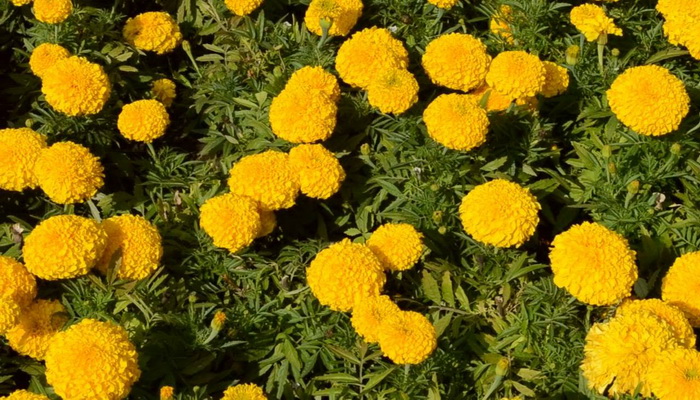
The variety “Yellow Stone” is distinguished by a chrysanthemum-shaped inflorescence of golden or pale yellow color. They can be used for compact bouquets.

Variety “Golden Light” is characterized by high, tall bushes with a red bloom on the shoots.
The inflorescences are lush, but not spherical. Flowering starts late, therefore it is suitable for making autumn floristic compositions.
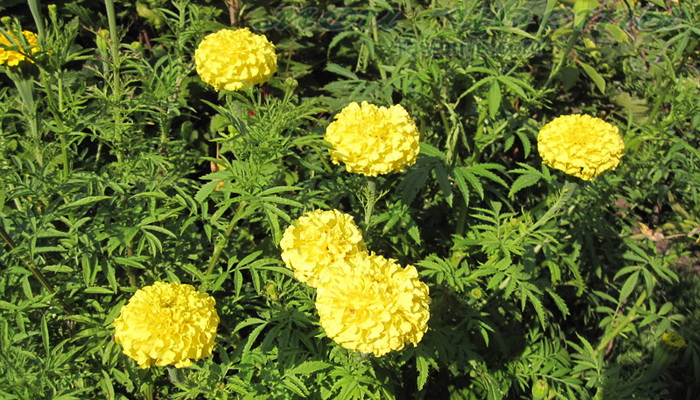
The Lemon Prince variety, thanks to the delicate lemon color of the inflorescences, looks especially impressive against the background of bright tapeworms. The leaves of these plants are carved, dark green in color.

The variety “Orange Princess” with bright orange flowers amazes with the brightness and splendor of the inflorescences (up to 12 cm in diameter).
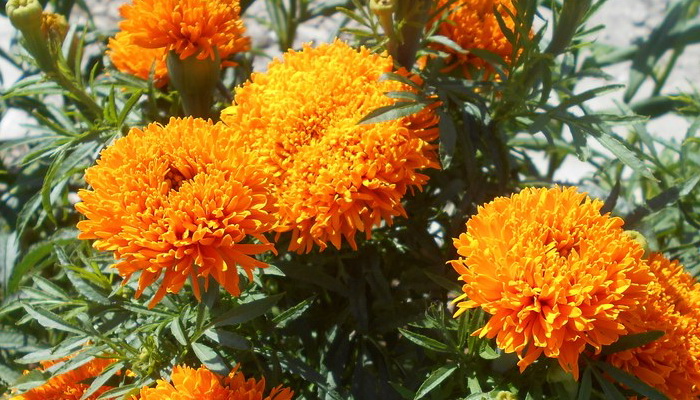
The Fantastika variety is relatively new, distinguished by chrysanthemum-shaped, very lush inflorescences.
True, according to some growers, the flowers of this variety look slightly disheveled.
Of the giant varieties of erect marigolds, the most popular are the “Golden Dollar”, “Hawaii”, “Gilbert Stein” and “Velvet Season”.
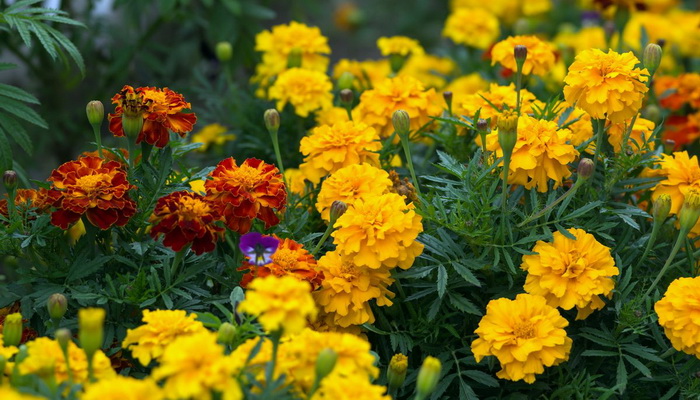
Variety “Golden Dollar” is quite early (budding time is approximately 2.5 months after sowing).
Chrysanthemum inflorescences have a deep orange color. The main thing that distinguishes the varieties is the absence of the aroma characteristic of the Tagetes.
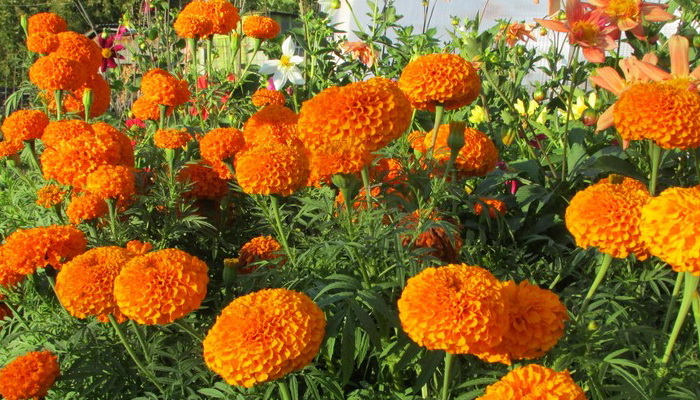
The Hawaii variety has the same color as the Golden Dollar, but the inflorescences are not chrysanthemum-like, but carnation-like. They reach 14 cm in diameter.
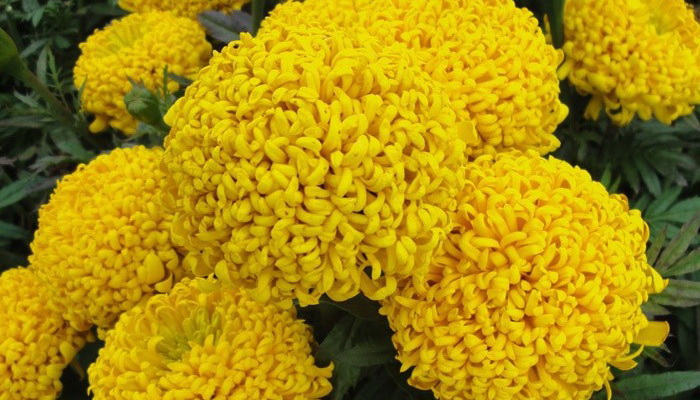
The variety “Gilbert Stein” is characterized by spherical inflorescences of light golden color. Suitable for cutting, and for decorating kombs when planting in the background.
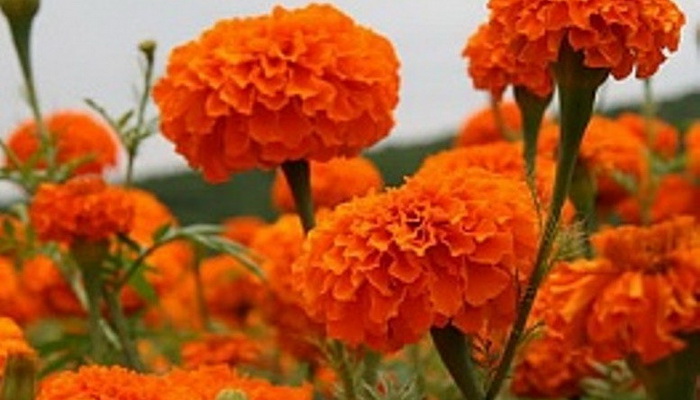
The Velvet Season variety is relatively new. Over the years of many years of selection, it was possible to achieve a gigantic size of bushes and inflorescences (over 15 cm). Flowers keep freshness in bouquets for a long time.
Rejected marigolds (Tagetes patula) are also called small-flowered or French.
This type is the most popular among flower growers. Shades of inflorescences in different varieties – from pale lemon to brown-orange. Often there are mixtures of varieties with bicolor inflorescences. In addition to excellent decorative qualities, this type of tagetes has medicinal value, in addition, due to the pungent smell of flowers and leaves, these plants can scare away harmful insects. Therefore, it is recommended to grow them not only in flower beds, but also in the beds, creating additional protection for cultivated plants.
Growing and using marigolds
In addition to growing in the garden, rejected marigolds are suitable for growing on balconies and terraces as a container crop. Some growers even manage to cultivate them even at home. Moreover, with indoor cultivation, you can achieve year-round flowering, creating sufficient lighting.
Tagetes patula have very strong stems with a pronounced central shoot and lateral shoots extending straight from the base. The leaves are serrate at the edges, dissected along the entire length, have a deep green color.
Depending on the variety, the bushes can be compact or spreading. Inflorescences-baskets are formed on high peduncles. Flowering is long-lasting and abundant. The seeds are able to germinate even after 4 years of storage. They reproduce by self-sowing, but at the same time the plants lose their varietal characteristics.
Due to its insecticidal properties, Tagetes patula is resistant to diseases, practically not affected by pests.
Unlike erect marigolds, in addition to chrysanthemum and cloves, they have one more group – simple ones. Their fundamental difference lies in the fact that the inflorescence basket contains only one layer of reed flowers along the edge and one layer of tubular flowers in the center.
As for the classification by height, the Tagetes patula do not have giant varieties, but they include a group of dwarf flowers (up to 20 cm in height). They were bred relatively recently and are actively used in urban landscaping to compose flower carpets.
The most popular varieties of dwarf rejected marigolds include such as “Kid”, “Harmony”, “Primo”, “Rumba” and “Tiger Eye”.

Variety “Malysh” includes flowers of the most varied colors.
Their distinctive feature is super-compactness and neatness of bushes, lack of spreading. Terry flowers up to 5 cm in diameter come into bloom early and, periodically replacing each other, do not fade in the flower bed until autumn.
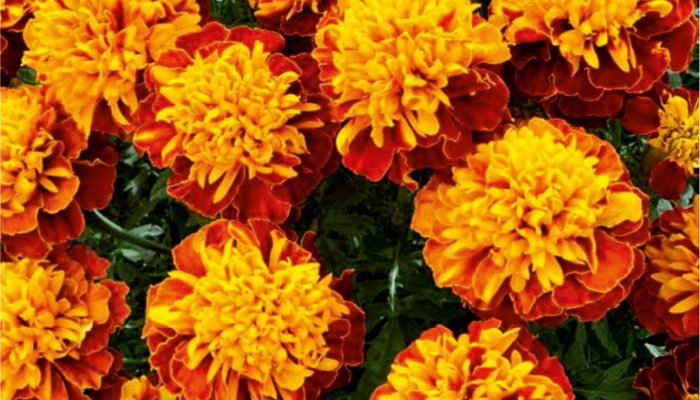
Variety “Harmony” is characterized by a high content of dense flowering buds on the bush, visually completely hiding the foliage.
With a short stature, these plants can grow up to 30 cm wide. Another “highlight” of the variety is the two-color color of mixed inflorescences. This variety is one of the most resistant to weather anomalies, which are not uncommon in the middle lane recently.
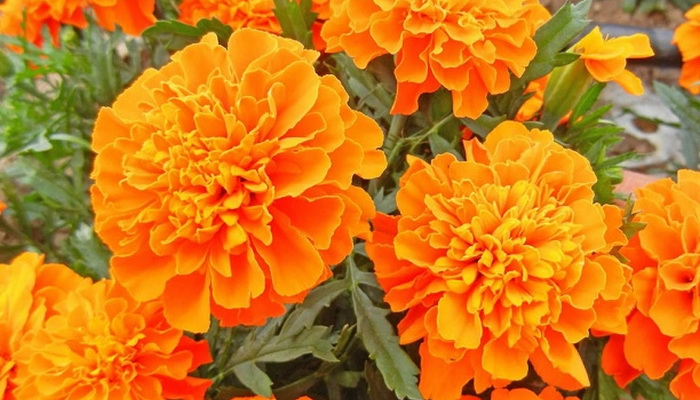
The Primo variety has gained popularity among aesthetic florists because of the unusual creamy or apricot color of the inflorescences.

The “Rumba” variety is simple in the form of inflorescences (as a rule, they are single-row), but original in color (alternation of juicy yellow and orange flowers). This alternation visually gives the flowers additional volume. Despite their dwarf size, the bushes are very strong and weather-resistant.
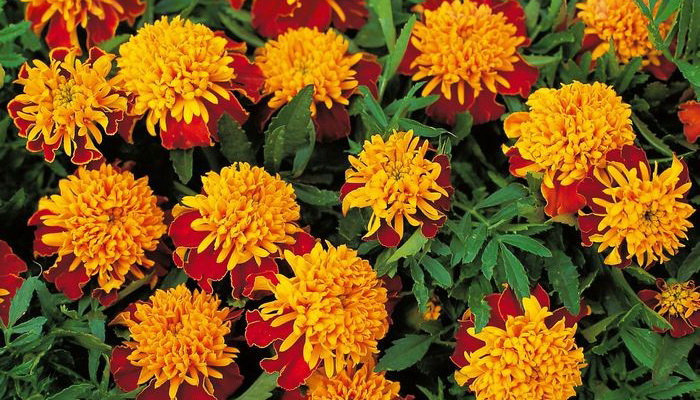
The “Tiger Eye” variety is characterized by double flowers and a combination of golden petals in the center with deep red at the edges.
The group of low-growing varieties of rejected marigolds is the most extensive. Such forms are displayed by breeders most of all, since there is an increased demand for them. This is not surprising – bushes of this size are the easiest to care for. The most interesting undersized varieties of Tagetes patula are Rock and Roll, Cherry Bracelet, Hero’s Gold, Aspen, Bolero, Aluminum, Golden Head and Pink Chameleon.

The Rock and Roll variety is prized for the presence of maroon specks on a delicate lemon background. The flowers are simple but very bright.

Variety “Cherry Bracelet” is distinguished by corrugated petals and juicy colors in two tones.

The variety “Hero’s Gold” is characterized by solid yellow flowers and stands out from other forms by the presence of petals of different sizes in one inflorescence.
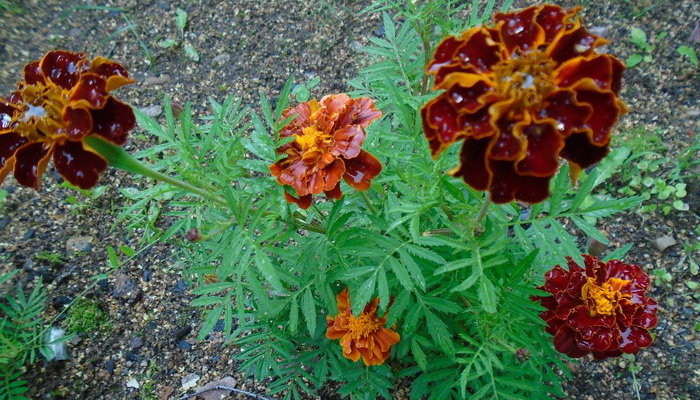
Variety “Aspen” has dark lush inflorescences with increased doubleness. Often yellow specks appear on the petals.
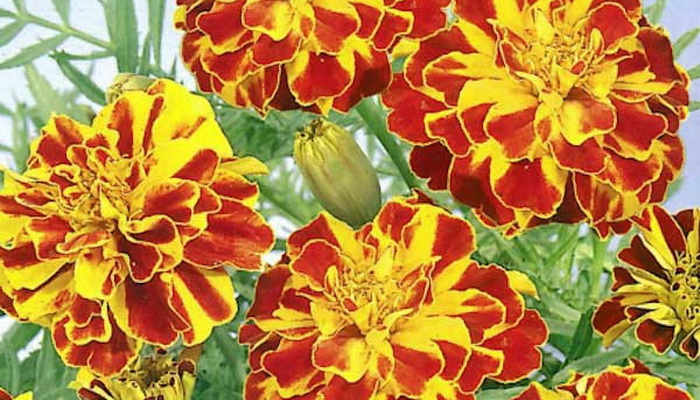
The Bolero variety is very popular due to the brightness of the colors and the number of buds on one bush.
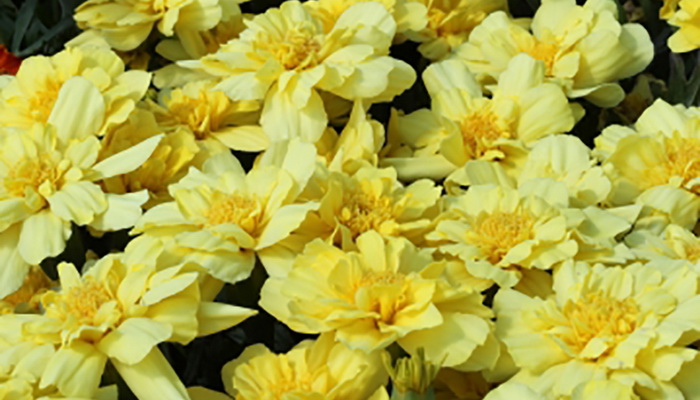
Variety “Alumiya” is unique in its yellow-cream color of inflorescences. Another advantage is the very early start of flowering.

The variety “Golden Head” is distinguished by the presence of a core of a color contrasting to the petals.
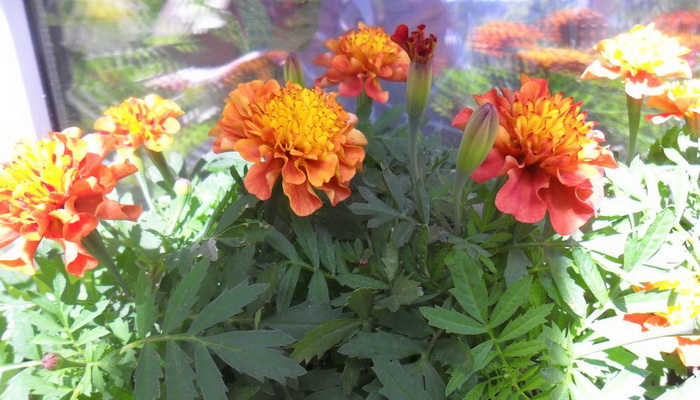
The Pink Chameleon variety was bred in the USA. It got its name because, as it blooms, the flowers gradually change their shade from pale yellow to burgundy.
Since the flowering of marigolds is heterogeneous, at the same time on one bush there can be flowers of four colors at once.
There are relatively few medium-sized and tall varieties of rejected marigolds. The best of them include the “Cheerful Clown” and “Golden Ball”.
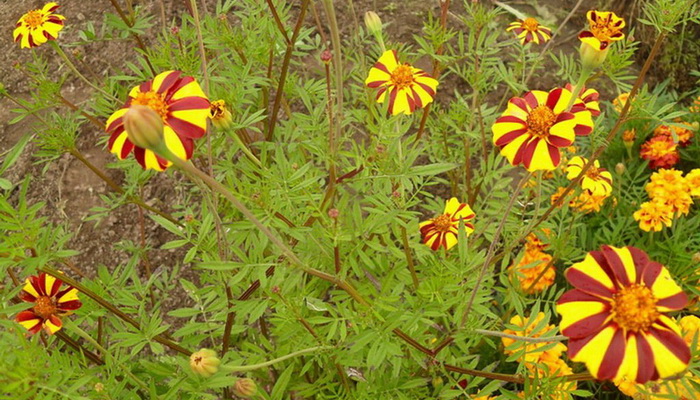
Variety “Merry Clown” grows up to 70 cm and has flowers with a diameter of 6 cm. Suitable for cutting and for growing in flowerpots.
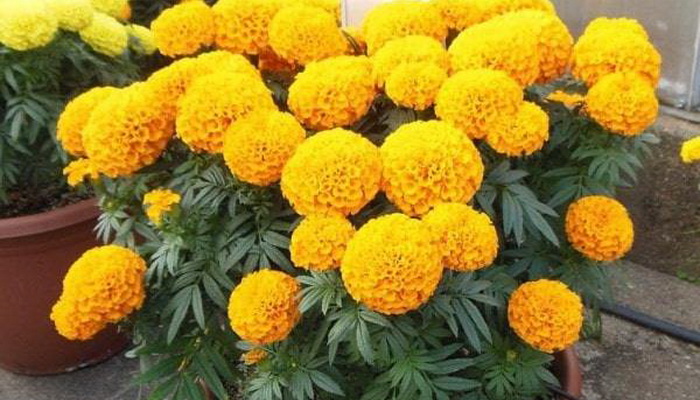
The variety “Golden ball” is slightly lower (up to 60 cm). It has a unique solar brightness color.
Fine-leaved marigolds (Tagetes tenuifolia) are also called Mexican – this is the most graceful species, including a relatively small number of varieties (about 70). The inflorescence and aerial part of these tagetes, in contrast to b. rejected, have a pleasant, specific aroma. Seed ripening occurs gradually, so it is recommended to collect them selectively.
This species was introduced into culture at the end of the 18th century.
Varieties of this species are not classified by height, since they all have approximately the same height (about 30-40 cm).
The leaves of Tagetes tenuifolia fully justify their name – they are very thin and graceful, and together with densely branched shoots create the image of a weightless cloud. It is from the leaves, not from the flowers, that the characteristic aroma of thin-leaved marigolds emanates – unobtrusive, pacifying, with a subtle lemon note.
Small inflorescences (up to 3 cm in diameter) are usually simple, often two-colored, and there are so many of them that doubleness would be unnecessary. The peduncles, like the leaves, are very thin, so it may seem as if the flowers are floating in the air. The three main colors of Tagetes tenuifolia are yellow in various shades, calm orange or deep red. It is not uncommon to find two-colored petals. One of the advantages of tegetes of this species in terms of care is the option of breaking withered flowers, since they themselves become invisible and do not spoil the general appearance of the plant.
It takes from one to one and a half months to ripen the seeds. The seed is smaller than that of erect or rejected marigolds.
All the varietal varieties of Tagetes tenuifolia are practically the same in size, the different forms differ from each other only in the color of the inflorescences.
Below are photos and descriptions of the varieties of fine-leaved marigolds, the most popular in summer cottage gardening:
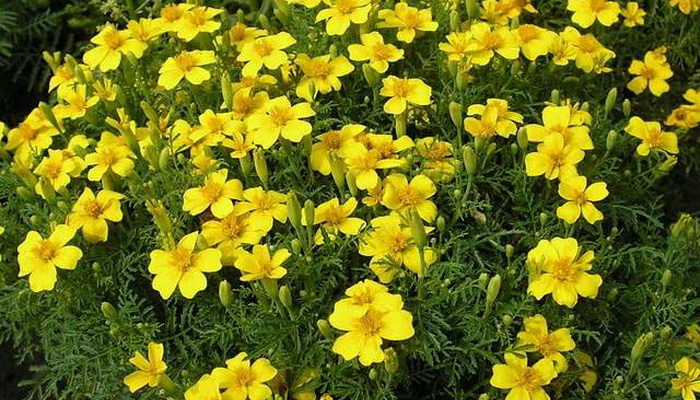
The “Lemon Jam” variety grows up to 25-30 cm, its flowers are small (up to 3 cm), non-double. The petals are sunny yellow, the leaves are delicate, delicate.
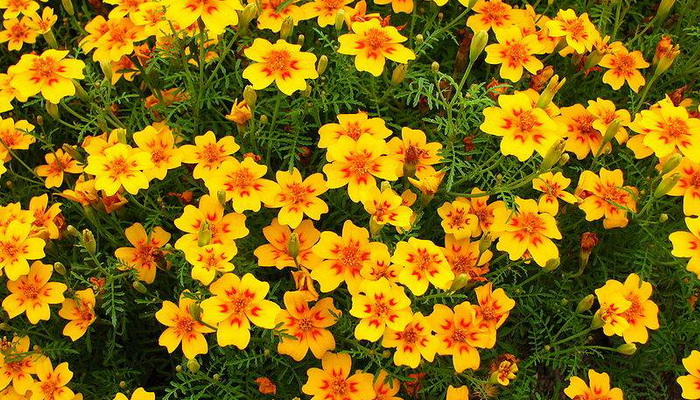
The variety “Orange Jam” differs from “Lemon Jam” in orange inflorescences and more intense greens.

Variety “Lemon Lilu” is characterized by dense branching and spreading of the bush.
Flowers can be of all shades of yellow. Ideal for growing in wall pots and on balconies in flowerpots.
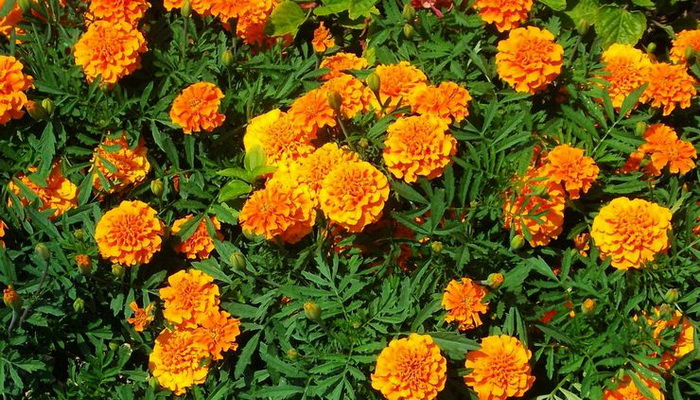
The Orange Dwarf variety is one of the longest flowering varieties with orange flowers.
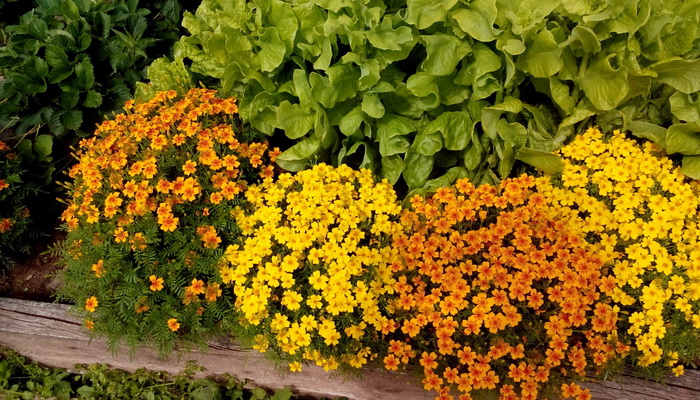
Variety “Mimi-mix” includes all flowers of yellow and orange tones. One of the most light-loving forms.
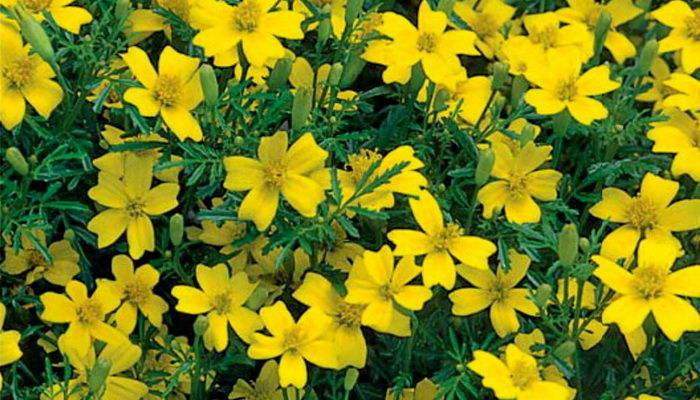
The variety “Golden Jewel” attracts with its bright color of hollow inflorescences.
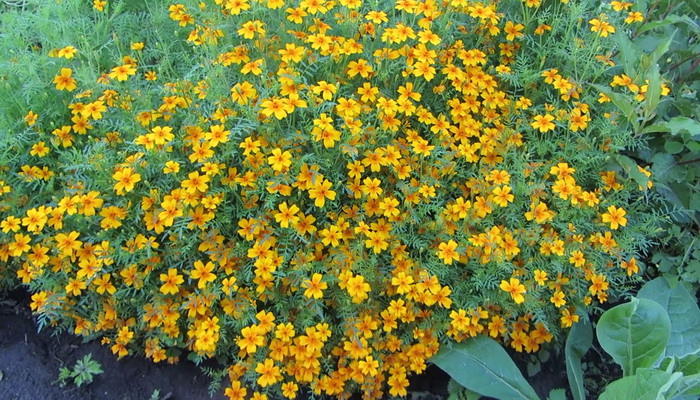
The variety “Zolotoy gem” has a two-color yellow-red petals.
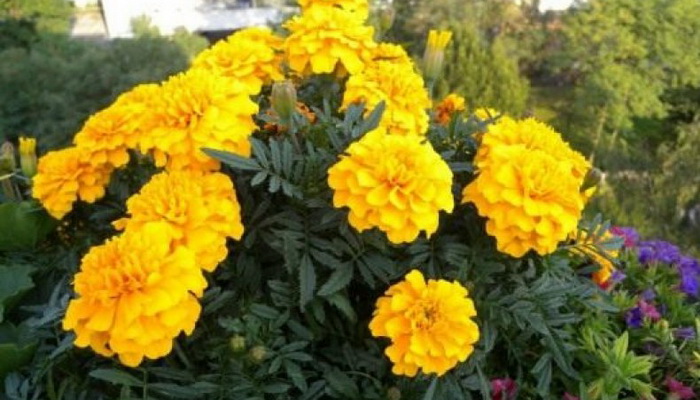
The variety “Golden Ring” is similar to “Golden Gem”, but there is much more red in the petals.
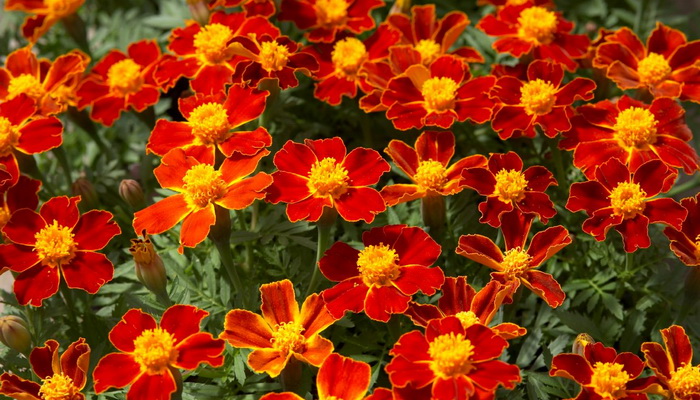
Variety “Red Gem” has scarlet petals, the middle is deep yellow.
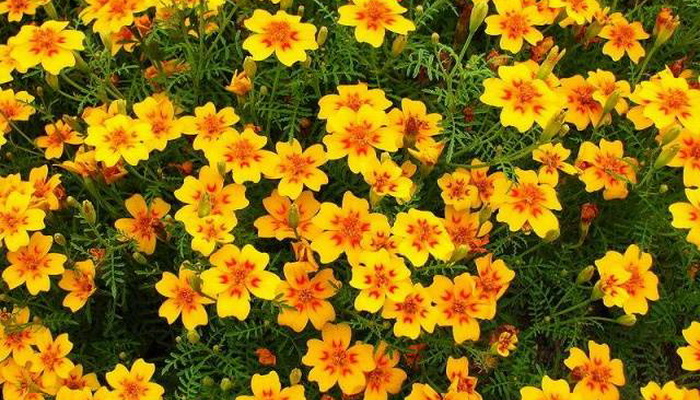
The Mandarin Jewel variety is distinguished by yellow petals with an orange core.
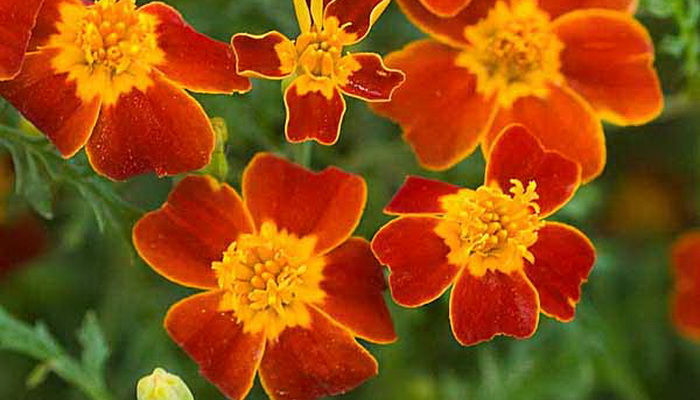
The Paprika variety is characterized by dark red petals with a dark orange core.
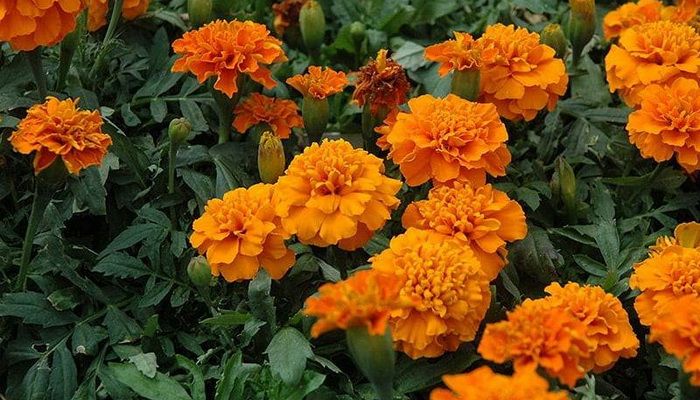
The variety “Fire Star Mix” is ideal for creating compositions in a natural style, since its flowers are not bright, but muted yellow-orange tones.
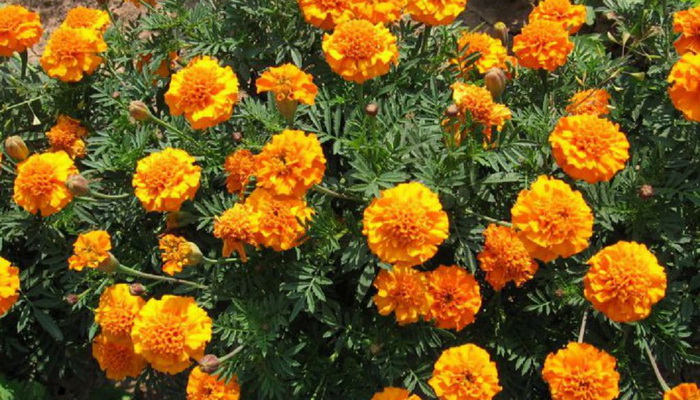
The variety “Star Light”, in contrast to the previous one, has brightly colored inflorescences in yellow and red colors.
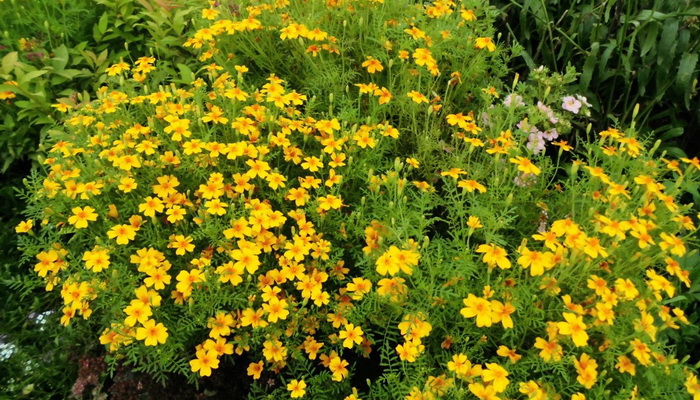
The Ursula variety is distinguished by two-colored yellow-orange petals and a red core.
The following describes how and when to plant marigold seeds of the bottom seedlings for growing in the open field, as well as see a photo of planting flowers and caring for plants:
Requirements for environmental conditions. Tagetes are light-loving plants, but they can easily tolerate partial shade. Any soil is suitable for their cultivation. The bushes are drought-resistant and thermophilic.
If we talk about the peculiarities of the cultivation of different species, then b. thin-leaved are more finicky than b. rejected.
Natives of warm countries, these plants do not tolerate frost and die even when the temperature drops just a few degrees below zero. When the average daily air temperature drops to + 10 ° C, the foliage of the Tagetes acquires a brick shade, the development of the plant stops.
Plants will not be delighted with the abundance of moisture – the leaves will begin to rot, and the flowering will become scarce.
Remember an important condition for growing marigolds: in order to get lush bushes and admire their beautiful flowering all season, you need to choose a sunny site for planting.
Breeding. It is produced by seeds that are sown in open ground before winter or in greenhouses. If you are growing marigolds at home, you need to plant seed in boxes in the second half of April. The first shoots appear within a week, after which the seedlings dive. Low-growing plants are planted at a distance of 20-25 cm. The distance when planting vigorous marigolds should be about 25-30 cm.
The optimum temperature for seed germination is at the level of + 22 ° + 24 ° C. After the shoots appear, it is recommended to reduce the temperature to + 18 ° + 20 ° C. This reduction will benefit the development of the root system. In addition, the lower temperature will help prevent the seedlings from pulling out. In order for the seedlings to be strong, it is important to provide the brightest possible lighting.
Tagetes of all kinds are easily tolerated. It is performed after the appearance of two true leaves.
Seedlings are transplanted into the flower garden after the threat of recurrent frosts disappears. The optimal distance between the bushes is about 40-50 cm.
Depending on the species and variety, flowering begins 40-60 days after germination.
According to the rules of cultivation, before flowering, marigolds of all types must be regularly watered, starting from mid-July, the number and intensity of irrigation must be reduced. During watering, it is recommended to apply phosphorus-potassium fertilizers, this will help improve flowering.
Tagetes can be grown by direct planting of seeds in open ground. True, flowering in this case will have to wait at least two months. If you sow the seeds thickly, you will get a flowering carpet, and if at sufficient distance from each other, you will get spherical bushes.
When planting seed in the ground, it is necessary to deepen the seed by 1 cm. After emergence, the seedlings must be thinned out.
Care. The main agrotechnical measures in caring for marigolds are weeding and loosening. After plant sprouting, feeding is performed with full mineral fertilizer, and when mass flowering begins, only phosphorus fertilizers need to be applied. Regular watering is important only during the growing period, after the beginning of flowering, the amount and intensity of irrigation must be reduced to a minimum.
Since tagetes have insecticidal properties, in late autumn, the bushes are recommended to be chopped up and embedded in the soil. This will help get rid of pests hibernating in the ground and improve the composition of the soil.
Using. Tall varieties of marigolds are used for flower beds, group plantings, flower beds, as well as for cutting (flowers stand in water for more than 10 days). Low-growing varieties of Tagetes are suitable for carpet flower beds, borders and flower beds, decorating balconies, and are used in potted culture. Since these plants are drought-resistant, and light-loving, they are not recommended to be used to decorate the banks of reservoirs and decorate shady gardens.
In some European and Latin American countries, dried tagetes flowers are used as a condiment. In Russia and the Caucasus, this seasoning is known as Imeretian saffron.
Also, infusions and mixtures based on tagetes are used as a therapeutic and prophylactic agent for constipation, used as a urine and diaphoretic. In large doses, these drugs can cause vomiting.
In the homeland of marigolds, in Mexico, these flowers are the official symbol of the Day of Remembrance of the Dead.
